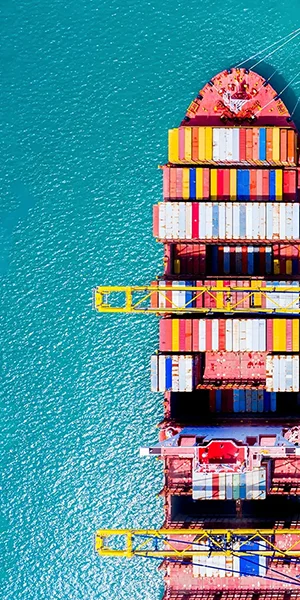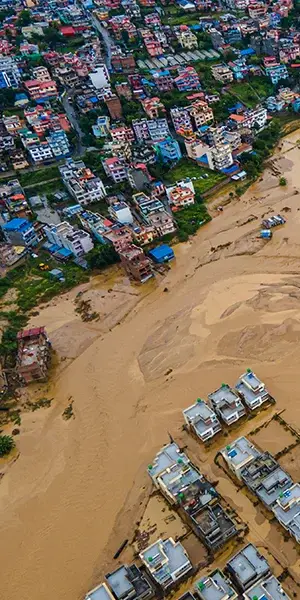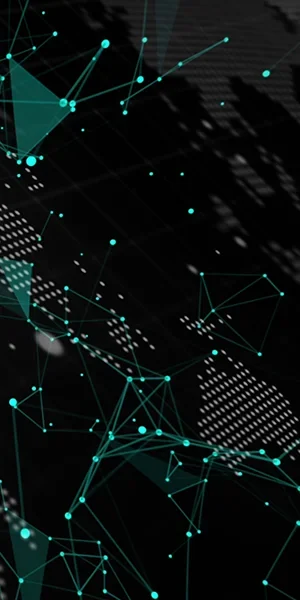For those of us in the (re)insurance industry in Asia Pacific, natural disasters are often top of mind – for good reason. Swiss Re research shows natural catastrophes caused USD 137 billion in insured losses globally last year, exceeding USD 100 billion for the fifth year running. And with the highest number of events and victims globally, our region is a hotspot. Destructive hailstorms in Japan, Super Typhoon Yagi in Vietnam, and Super Typhoon Ragasa, deemed the strongest tropical storm of the year, sweeping through the Philippines and Southern China in September, have all served as recent reminders of this reality.
Though they can be devastating, these events shouldn’t blind us to the bigger picture. More and more, Asia Pacific isn’t just a flashpoint for extreme weather. It’s a potential epicentre of systemic shocks that could resonate globally.
In many respects this is a direct result of our region’s astonishing success, and increasingly prominent position in the global economy. Asia is a dominant force in the technology industry, with Taiwan alone accounting for over 90% of production of the most advanced semiconductors; China and South Korea leading worldwide battery supply; and Singapore emerging as one of the world’s densest data centre hubs. Asia is also now the world’s fastest-growing region for urbanisation and wealth – by 2050, it will account for half of global GDP.
The price of prosperity
Asia’s growth is a massive achievement that is ushering in new opportunities and prosperity for millions of people – but its assets, infrastructure and livelihoods exposure to risks is also rising. Expanding megacities like Tokyo, Mumbai and Manila are clustering people and assets in areas that are catastrophe-prone and often vulnerable to extreme heat, which has been flagged as the deadliest natural peril by far. Heavy concentration of technology supply chains in a few critical hubs means any disruption that strikes these places has outsized impacts, as we saw with earthquakes last year that brought factories in Taiwan to a standstill.
The critical shipping lanes that crisscross our region – like the Strait of Malacca, or South China Sea – could easily become chokepoints in any geopolitical conflict. We must all of this add to the relatively new but no less critical vector of cyber threats, in a region that thrives on connectivity. Incidents such as the 2022 cyberattack on Kojima Industries, a major supplier to Toyota, and the startling nationwide outage of Australia’s Optus network in 2023, demonstrate how intangible vulnerabilities are changing the risk calculus. As we’ve noted in our annual SONAR report on emerging risks, with AI making deepfakes and disinformation more accessible and sophisticated, tech-driven challenges will only grow.
What unites all these threats is that they never strike in isolation; nor are their impacts confined to a single sphere. They echo across property, liability and financial markets, potentially damaging health and livelihoods as well as commercial assets; exerting reputational as well as financial costs; pressuring not just individual businesses but entire supply chains. And our region, as a global manufacturing and tech hub, sits in the crosshairs.
With exposures and losses in Asia rising rapidly, the region has become the world’s testbed for resilience. That reality should compel us – as an industry and as a region – to collaborate more deeply and rethink how we leverage data, capital and knowledge to strengthen protection before the next systemic shock hits.
A time for new approaches
Natural catastrophe insured losses are growing by 5 to 7% annually; as Urs Baertschi, Swiss Re’s CEO of Property & Casualty Reinsurance, has said, we are starting to reach the limits of traditional insurance. There’s a one in ten chance insured natural catastrophe losses will exceed USD 300 billion this year.
The network effects of an event like a cyber-attack, which may ripple across multiple industries, can quickly generate losses that would overwhelm standard portfolios. No balance sheet or amount of reserves would be capable of absorbing the speed or magnitude of the potential shocks a region like ours faces.
The scale of payouts in recent years underscores this reality: Swiss Re paid more than USD 37 billion in claims across the Group in 2024, a stark measure of how deeply the industry is already absorbing shocks. While we continue to support our clients and society manage peak risks, we also need to focus on building systemic capacity for a new world of cascading, correlated losses.
Charting a path forward will have less to do with capital than developing insights, and the ability to act on them. Technology brings new risks, but also the ability to analyse and model threats and interdependencies with greater speed, depth and sophistication. We’ve seen in our own Risk Data Solutions practice how integrated platforms are enabling clients to track exposure to hazards like floods and wildfires for specific locations in real time, supporting readiness and faster decision-making.
Higher-quality, more granular data also paves the way for specialised and innovative insurance solutions such as parametric structures, which provide rapid liquidity when triggered by specific events. In May last year for example, a parametric programme we co-designed rapidly effected payouts to cover income lost by nearly 50,000 women in India impacted by heatwaves.
Capacity through collaboration
We should also recognise that when facing a risk environment like we do today, no one actor can go it alone. Rising exposure and escalating losses across Asia highlight the importance of constructive dialogue and cooperation across the broader re/insurance ecosystem – including insurers, reinsurers, governments, and corporates – to enhance awareness on protection and management of risk.
Reinsurers can engage not only with insurers, but also governments, multilateral agencies and other stakeholders by raising awareness and sharing insights on risk understanding. The response to the 2011 Tohoku earthquake and tsunami in Japan is a case in point. The government took steps to learn from the strategy, collecting data that informed more robust warning systems and building codes, while businesses were also quick to invest in protection. The result is more resilience to future losses.
The resilience of our region therefore depends on how quickly and effectively stakeholders can contribute expertise and enhance knowledge-sharing as well as promote best practices that strengthen market resilience. In this way the role of reinsurers is evolving from being capacity providers to knowledge partners, delivering data, insights and advice that support policies and behaviours as well as insurance decisions.
Asia Pacific’s future rests on a more anticipatory and comprehensive approach to assessing and mitigating a range of interconnected risks. Achieving this will require continued innovation, open dialogue, and responsible partnerships across the risk ecosystem — enabling all participants to strengthen resilience and ensure that protection evolves in step with our region’s growth.












